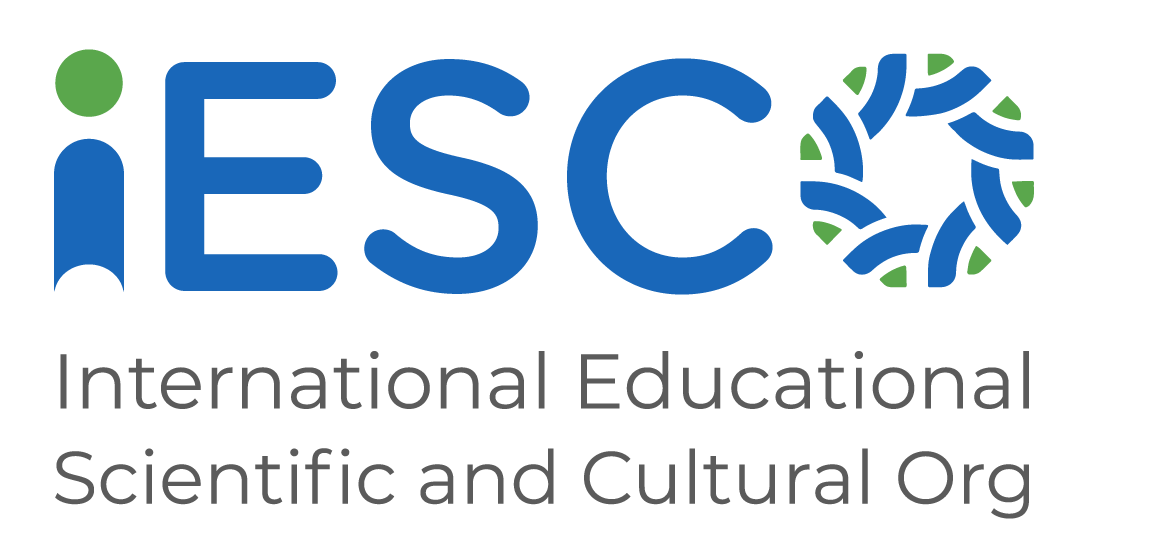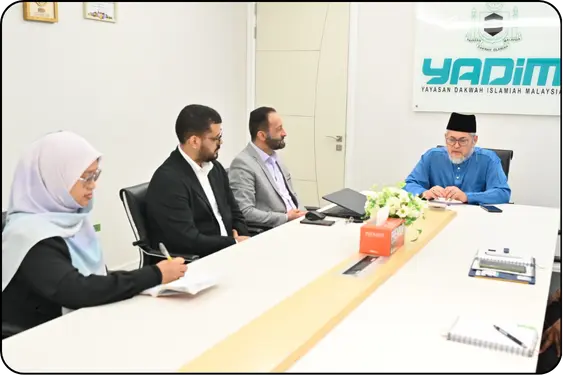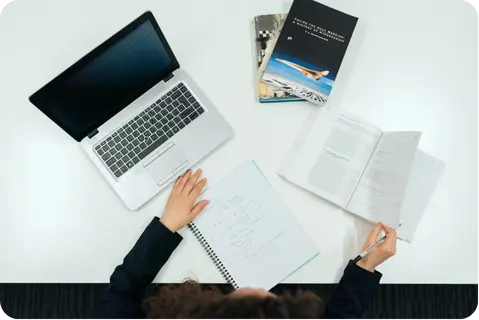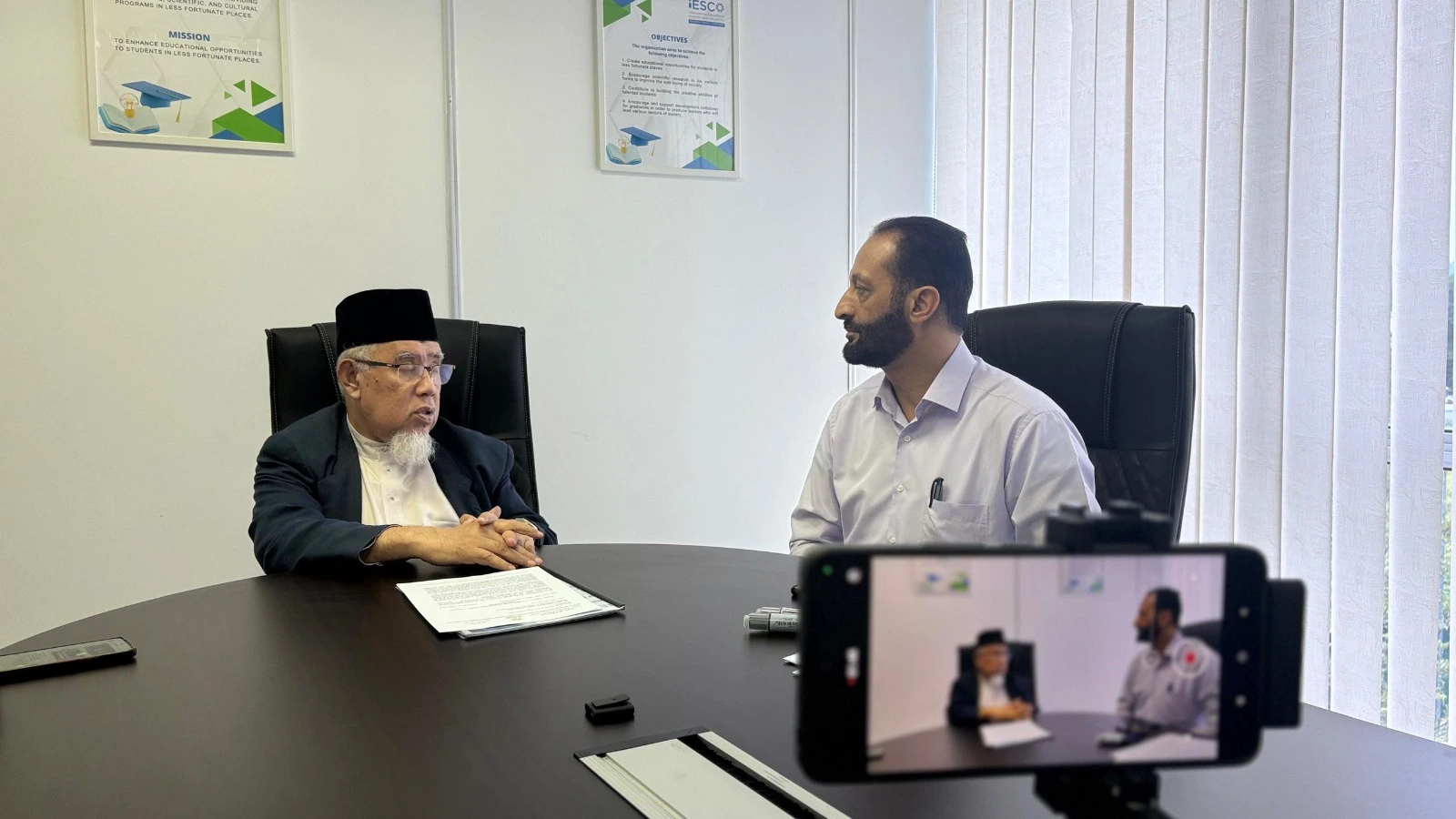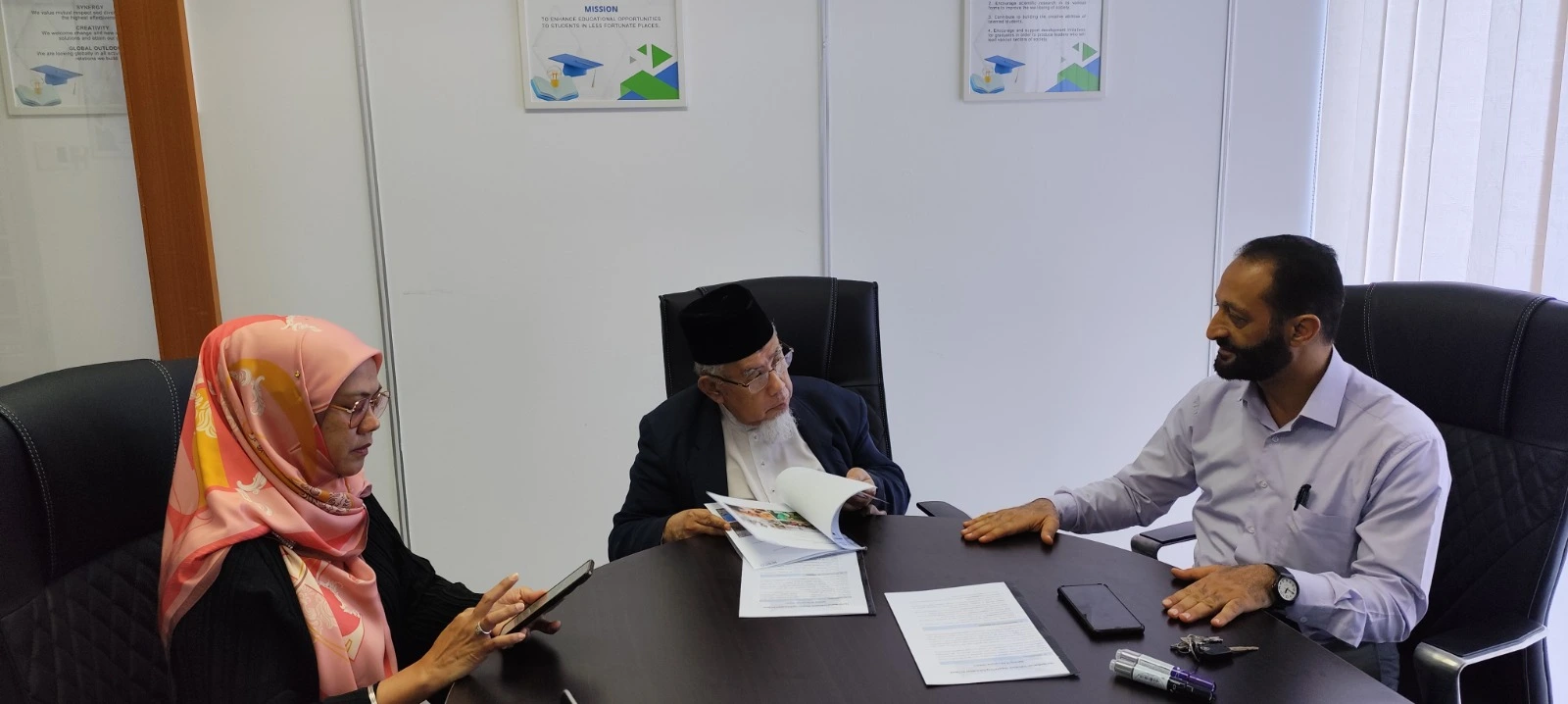Universiti Teknologi Malaysia (UTM) | Fees, Courses & Reviews (2025)
Did you know that Universiti Teknologi Malaysia (UTM Malaysia) achieved a remarkable 100% employment rate for its graduates within the first few months after graduation?
This outstanding figure positions University of Teknologi Malaysia as one of the most sought-after study destinations among Arab students aiming for both academic and career success.
Renowned for its excellence in technical and engineering education, UTM Malaysia ranks among the world’s top 200 universities, according to the QS World University Rankings 2025. With two strategic campuses—its main campus in Johor and a branch in the capital, UTM Johor and UTM Kuala Lumpur offer a wide range of options tailored to the needs of over 5,600 international students from around the globe.What truly sets Universiti Teknologi Malaysia apart is its unique combination of world-class education and affordable tuition.
Full-degree engineering programs at UTM start at just USD 18,000—offering exceptional quality at a cost rarely matched by other top-ranked technological universities worldwide.
In this comprehensive guide, you’ll discover everything you need to know about Universiti Teknologi Malaysia’s courses, from chemical engineering—ranked among the top 100 globally—to leading programs in computer science and architecture, both ranked first in Malaysia.
We’ll also reveal insights into UTM’s global ranking, its strategic locations, and real testimonials from Arab students who chose this prestigious institution to fulfill their academic and professional aspirations.

Whether you’re considering UTM Johor or UTM Kuala Lumpur campus as your main study destination, this article will serve as your essential roadmap to making an informed decision about studying at one of Asia’s finest technology universities.
An Overview of Universiti Teknologi Malaysia (UTM Malaysia)
Universiti Teknologi Malaysia, widely known as UTM Malaysia, is far more than an academic institution—it is a true symbol of technological and scientific advancement in Southeast Asia. Officially established in 1972, the university’s roots trace back to 1904, making it one of the oldest and most prestigious technological universities in the region.
The Numbers Speak for Themselves
Today, University of Teknologi Malaysia represents a thriving academic community that includes:
- 17,700 Bachelor’s degree students across a wide range of scientific and technical disciplines
- 3,200 postgraduate students enrolled in master’s and doctoral programs
- Over 5,600 international students from 60 different countries, making UTM Malaysia a truly global destination
- More than 200,000 qualified graduate working across various technological sectors worldwide
Strategic Location: Two Campuses in the Heart of Malaysia
The main Universiti Teknologi Malaysia campus is located in Skudai, Johor, sprawling across 1,222 hectares. This flagship UTM Johor campus functions as a fully integrated university town, with academic, residential, and recreational facilities set amidst a lush tropical environment.
In addition to the main campus, UTM also operates a modern branch in the capital city. The UTM Kuala Lumpur campus covers 38 hectares and offers specialized academic programs, including those from the Malaysia-Japan International Institute of Technology (MJIIT) and the international business school. This urban campus provides students with a wide variety of study options right in the heart of Malaysia’s vibrant capital.
UTM Malaysia Rankings: Globally and Nationally
The global and national rankings of Universiti Teknologi Malaysia (UTM Malaysia) reflect its distinguished status in the international academic arena:
- Ranked among the top 200 universities worldwide according to the QS World University Rankings 2025
- First in Malaysia for Petroleum Engineering and Architecture
- Listed among the world’s top 50 universities in various engineering disciplines, as per the QS World University Rankings by Subject
- A prestigious government research university officially recognized by education ministries across the Arab world
Such high rankings are no coincidence. They are the result of decades of investment in scientific research, curriculum development, and the recruitment of top-tier academics from around the world. UTM is also accredited by leading Malaysian and international professional bodies, ensuring high-quality education and global employability for its graduates.
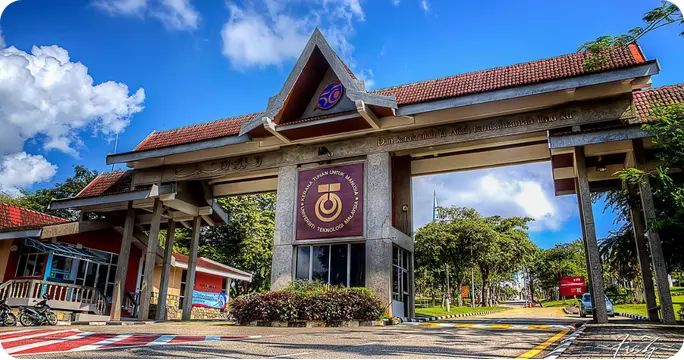
UTM Programs and Fields of Study in Malaysia
Universiti Teknologi Malaysia (UTM) offers a wide and diverse range of academic programs designed to meet the demands of today’s job market. With over 35 undergraduate programs and approximately 70 postgraduate programs (master’s and PhD), UTM equips students with strong foundations for promising careers across various scientific and technological fields.
First: Engineering Programs – The Core Strength of UTM Malaysia
Universiti of Teknologi Malaysia is internationally recognized for its excellence in engineering education. Several of its engineering programs are ranked among the top 100 in the world, according to the QS World University Rankings by Subject.
1. Chemical Engineering – A Top-Ranked Global Program
- Consistently ranked among the world’s top 100
- Focuses on oil and gas technologies, petrochemical industries, and renewable energy
- Strong industry partnerships with global giants such as Petronas and Shell
- Advanced laboratories and cutting-edge research projects
2. Electrical and Electronic Engineering
- Offers a diverse range of specializations, including telecommunications engineering, power systems, and automatic control
- Joint programs with Japanese universities through the Malaysia-Japan International Institute of Technology (MJIIT)
- Emphasis on artificial intelligence and Internet of Things technologies
3. Mechanical and Aerospace Engineering
- Covers mechanical design, aerospace engineering, and advanced manufacturing
- Equipped with state-of-the-art labs and workshops
- Valuable internship opportunities with leading Malaysian aviation companies
4. Civil and Environmental Engineering
- Programs in construction engineering, transportation, and water management
- Hands-on projects connected to Malaysian infrastructure development
- Strong focus on sustainability and environmental engineering
Second: Computer Science and Information Technology
Universiti Teknologi Malaysia has a modern faculty of computing and information technology that offers leading programs such as:
- Computer Science – ranked among the best in Asia
- Software Engineering – with focus on mobile and web applications
- Cybersecurity and Network Security – high-demand specializations
- Artificial Intelligence and Data Science – cutting-edge and research-oriented
- Multimedia Technology – covering game design and animation
Third: Architecture and Design – Top Ranked in Malaysia
The School of Architecture at Universiti Teknologi Malaysia is ranked first nationwide and among the top 50 globally:
- Architecture – an internationally accredited 4–5 year program
- Urban and Regional Planning – with a focus on smart cities
- Landscape Architecture – specialized in designing green spaces
- Property and Facilities Management – highly sought-after in the job market
Fourth: Other Distinguished Faculties and Programs
1. Faculty of Science
- Industrial Chemistry and Applied Physics
- Mathematics and Statistics with AI applications
- Biology and Biotechnology
2. UTM International Business School
- Technology-based MBA program
- Innovation and Technology Management
- E-commerce and Digital Business
3. Faculty of Education and Human Development
- Science and Technology Education
- Human Resource Development
- Technical and Vocational Training
Fifth: UTM International and Exchange Courses and Programs
What makes UTM Malaysia truly exceptional is its extensive offering of international academic pathways:
- Malaysia-Japan International Institute of Technology (MJIIT) – delivering joint degree courses and programs with leading Japanese universities
- Dual-degree partnerships with universities in Europe and the United States
- Bilateral student exchange agreements with over 200 partner universities
- Comprehensive English-medium instruction available across all fields of study
Thanks to this rich academic diversity, UTM Malaysia ensures that every student whether studying at UTM Johor or UTM Kuala Lumpur campus finds a course that aligns with their passion and career ambitions, whether in advanced engineering, modern information technology, creative architecture, or Technology-Based Business Administration.

Tuition Fees at UTM Malaysia
For many Arab students considering international education, accurately estimating tuition fees and living expenses is a crucial part of the planning process. The good news is that tuition fees at Universiti Teknologi Malaysia (UTM Malaysia) are exceptionally affordable, especially when compared to the global standard of education the university provides. In this section, you’ll discover how UTM Malaysia can offer you a world-class degree at a cost less than one-third of what you’d typically pay at American or European universities.
Undergraduate Tuition Fees at UTM Malaysia: A Smart Investment in Your Future
UTM Malaysia is known for its full transparency in tuition fee structures, helping students and families plan their finances with confidence. Here is a complete breakdown of undergraduate fees by area of study at Universiti Teknologi Malaysia.
Engineering and Technology Programs: High Demand and Industry-Relevant
Engineering fields (such as chemical, electrical, mechanical, civil, and computer engineering)
- Total tuition fee: MYR 75,000 for the full 4-year program
- USD equivalent: approximately $18,000 for the entire degree
- Annual tuition: MYR 18,750 (~$4,500 per year)
- This includes: Chemical Engineering, Electrical Engineering, Mechanical Engineering, Civil Engineering, and Computer Engineering
Computer Science and Information Technology (Offered by the School of Computing):
- Annual tuition fee: MYR 17,500 (~$4,170 per year)
- Total for 4 years: MYR 70,000 (~$16,680)
Business and Humanities Programs: A Smart and Affordable Choice
- Total tuition fee: MYR 63,000 for the full 4-year program
- USD equivalent: approximately $15,000 for the entire degree
- Annual tuition: MYR 15,750 (~$3,750 per year)
Postgraduate Tuition Fees: Exceptional Value for Master’s and PhD Degrees
If you’re considering a master’s or PhD, Universiti Teknologi Malaysia offers some of the best value-for-money education options in the region. Tuition fees are standardized and remarkably affordable.
Master’s Programs (All Specializations)
- Annual tuition fee: MYR 7,500 (~$1,800 per year)
- Program duration: typically 1.5 to 2 years
- Total tuition fee: around MYR 15,000 (~$3,600 for the full degree)
- Includes: coursework-based and mixed-mode (coursework + research) programs
PhD Programs
- Annual tuition fee: MYR 7,500 (~$1,800 per year)
- Program duration: typically 3 to 4 years
- Total tuition fee: around MYR 22,500–30,000 for the full program
Global Comparison: Why UTM Malaysia is a Smart Deal
To put the tuition fees at Universiti Teknologi Malaysia into perspective, let’s compare them with those at other prestigious universities worldwide:
- Top U.S. Universities: $40,000–$60,000 per year for engineering degrees
- Leading UK Institutions: £25,000–£35,000 per year
- Top Canadian Universities: CAD 30,000–45,000 per year
- UTM Malaysia: only around $4,500 per year for the same high-quality education
This means that four full years at UTM Malaysia could cost less than a single semester at a prestigious American university—without compromising on academic standards or career opportunities.
Cost of Living in Malaysia: Affordable and Comfortable Student Life
In addition to low tuition fees, Malaysia offers an exceptionally affordable cost of living, especially in Johor, where Universiti Teknologi Malaysia (UTM) is located. Here’s a full breakdown of monthly living costs:
Basic Budget (for budget-conscious students):
- On-campus accommodation: RM 400–600 ($100–150)
- Food: RM 600–800 ($150–200)
- Transportation: RM 100–200 ($25–50)
- Other essentials: RM 200–300 ($50–75)
Monthly Total: RM 1,300–1,900 ($325–475)
Comfortable Budget (for moderate lifestyle):
- Accommodation: RM 600–1,000 (off-campus or better options)
- Food: RM 800–1,200 (more variety)
- Transport: RM 200–400 (Grab rides, trips)
- Leisure & activities: RM 300–500
Monthly Total: RM 1,900–3,100 ($475–775)
Practical Examples Of Everyday Life
To help you visualize actual expenses in Johor, here are some sample daily costs:
- Meal at the UTM canteen: RM 6–10 ($1.5–2.5)
- Soft drink: RM 1.5 ($0.40)
- Cinema ticket: RM 10 ($2.5)
- Short ride by grab: RM 5–15 ($1–4)
- Meal at a mid-range restaurant: RM 15–25 ($4–6)
- Basic groceries per month: RM 200–300 ($50–75)
Additional Costs to Consider
To have a complete financial overview, consider these additional expenses:
- Health insurance: ~RM 500/year ($120)
- Student visa fee: RM 1,000–1,500 ($250–375) for first application
- Annual visa renewal: RM 500 ($120)
- Books and academic supplies: RM 1,000–2,000/year ($250–500)
- Yearly return trip home (depending on country): $800–2,000 depending on country
Financial Summary: A Smart Investment for a Promising Future
If you’re pursuing a Bachelor’s degree in engineering at UTM malaysia, here’s a realistic total cost over four years:
- Tuition fees: ~$18,000
- Living expenses: $20,000–35,000
Total estimated cost: $38,000–53,000
This amount is equivalent to only one and a half years at a top U.S. university, yet it offers the same high-quality education and career potential.
Admission Requirements and Application Criteria at Universiti Teknologi Malaysia
UTM Malaysia stands out for offering clear and accessible admission requirements, especially when compared to other prestigious global institutions. Believing in inclusive and high-quality education, Universiti Teknologi Malaysia ensures that qualified students—particularly from the Arab world—can apply with ease and confidence.
Undergraduate Admission Requirements
Here’s what you need to apply for bachelor’s courses and programs at Universiti Teknologi Malaysia:
1. Academic Qualification
- A recognized high school certificate (e.g., Thanaweya Amma, Tawjihi, Baccalauréat)
- A satisfactory GPA in subjects relevant to the chosen engineering or science major
- Some competitive programs may require a strong background in Mathematics and Physics
- The university conducts a holistic evaluation—there is no exceptionally high GPA barrier
2. English Language Proficiency
Since all undergraduate programs are taught in English at UTM Malaysia, applicants must prove language proficiency through one of the following tests:
- IELTS with a minimum score of 5.5
- TOEFL iBT with a minimum score of 46
Some departments may ask for higher scores—such as IELTS 6.0 or 6.5—for more advanced programs
3. Preparatory English Programs
For students who fall short of the minimum language scores, UTM University Malaysia offers tailored solutions:
- The Bridging Programme: a well-structured academic pathway to full admission
- The Intensive English Programme (IEP): highly focused courses to build language skills quickly
- Duration varies from 1 to 6 months, based on placement test results
After successful completion, students proceed directly to their degree program
Postgraduate Admission Requirements at UTM Malaysia
Whether you’re pursuing a master’s degree or a PhD, the admission process is academically driven and clearly structured.
1. Master’s Degree Programs
To be eligible for master’s programs at Universiti Teknologi Malaysia, applicants must meet the following criteria:
- A recognized bachelor’s degree
- A minimum CGPA of 3.0 out of 4.0, or the equivalent of a “Good” grade
- Applicants with a CGPA between 2.5 and 3.0 may still be admitted if they have 3–5 years of relevant work experience
The bachelor’s degree must be in a field related to the intended master’s specialization
2. PhD Programs
For those aiming to join doctoral programs at UTM, requirements include:
- A recognized master’s degree
- An outstanding academic track record in graduate studies
- A research proposal aligned with the department’s scope
- An official supervision agreement with a faculty member at UTM
3. Language Requirements for Postgraduate Programs
- IELTS score of 6.0 or above
- TOEFL iBT score of 79 or above
Applicants from English-speaking countries or with previous academic qualifications taught in English may be exempted.
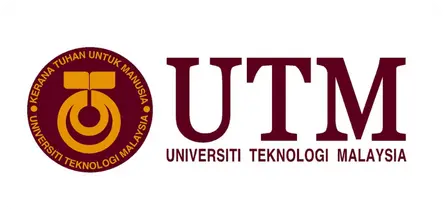
How to Apply: Online and Hassle-Free
UTM Malaysia provides a modern, user-friendly online admission platform to make the process simple for international students.
Application Steps:
- Submit your application online via the official university portal
- Upload all required documents in high-quality PDF format
- Pay a small application fee (around MYR 100)
- Track your application status through the university system
- Receive your admission offer within 2–4 weeks (typical processing time)
Required Documents:
- Translated and certified university certificate
- Academic transcripts (translated and notarized)
- Proof of English proficiency (IELTS or TOEFL)
- Valid passport copy
- Personal passport-sized photographs with white background
- Statement of purpose (required for postgraduate applications)
- Recommendation letters (required for postgraduate applications)
Admission Periods and Essential Tips
Understanding these practical details will save you time and effort, and significantly increase your chances of success.
Intake Periods
Universiti Teknologi Malaysia (UTM) offers flexible admission throughout the academic year:
- Main Intake (September): Applications open in April
- Second Intake (February): Applications open in October
- Postgraduate Programs: Rolling admissions throughout the year
Tips for a Successful Admission
- Apply early: Secure your spot and ensure a smooth student visa application process.
- Prepare for the language: Start improving your English skills months before the test.
- Choose the right program: Make sure your academic background matches the program requirements.
- Stay in touch with admissions office: The international admissions office is always ready to assist you.
Student Visa (Student Pass)
Once you’re accepted into Universiti Teknologi Malaysia (UTM), international students are required to:
- Apply for the Student Pass through the university
- Processing time: Approximately 6 to 8 weeks
- Validity of the student pass: Covers the entire duration of study
- Annual renewal: With support from the International Student Office
The good news? UTM Malaysia handles most of the visa process, making it extremely smooth for Arab students. All you need to do is submit your documents and wait!
UTM Malaysia Campus Locations and Branches
Universiti Teknologi Malaysia (UTM) operates two strategically located campuses, each offering a distinct environment and academic opportunities. Here’s a practical comparison of both locations — including key features and the challenges you may actually face:
1. Main Campus – Johor (Skudai)
This is the main campus where most academic programs are offered:
- Campus size: 1,222 hectares (a full-fledged university town)
- Location: Johor state, southernmost tip of Malaysia
- Distance from Kuala Lumpur: 350 km (around 4 hours by car)
- Available programs: All engineering and science programs
- Student population: Approximately 18,000 students
2. Kuala Lumpur Campus
A smaller branch located in the capital city, focused on specialized programs:
- Campus size: 38 hectares only
- Location: Central Kuala Lumpur (the capital)
- Main programs offered:
- Malaysian-Japan Institute of Information Technology (MJIIT)
- UTM International Business School
- Specialized postgraduate programs
- Key benefits: Proximity to commercial centers and advanced transportation
- Cost of living: 30–40% higher than in Johor
Geographical Advantages of Universiti Teknologi Malaysia Location
Proximity to Singapore – A Golden Opportunity:
- Distance: Only 20 km from the Singaporean border
- Travel time: 45–60 minutes by public bus to downtown Singapore
- Travel cost: RM 5–8 by public transportation
- Career opportunities: Job fairs, conferences, and internships at international companies
- Shopping: Lower electronics prices in Singapore
- Visa: Easy access to short-term tourist visas
Iskandar Development Project:
- What it is: A major government initiative to transform southern Johor into a developed economic zone similar to Singapore
- Size: 2,217 square kilometers (larger than the Kingdom of Bahrain)
- Investment: RM 383 billion (USD 90 billion) by 2025
- Goal: To create 3 million jobs by 2025
- Key sectors: Fintech, logistics, advanced manufacturing, medical tourism
- New companies: Hundreds of factories and R&D centers
- Opportunities for students: Paid internships, post-graduation jobs, final year projects with companies
- Concrete examples: Mercedes-Benz factory, Legoland theme park, data centers for Google and Microsoft
Low Cost of Living
- Cheaper than Kuala Lumpur: 15–20% lower living expenses
- Apartment rent: Half the price compared to the capital
- Food and transportation: Very affordable prices
Natural Environment
- Green spaces: 1,222 hectares of parks and lakes
- Clean air: Far from major city pollution
- Tropical climate: Warm weather all year round
- Nearby beaches: Desaru is only 45 minutes away
Challenges You May Face
Public Transportation Issues:
- No metro or train: Only buses are available
- Limited frequency: One bus every 30–45 minutes to Johor city center
- Grab ride cost: RM 25–40 per trip to downtown
- Service hours: Public transport ends early (around 10 PM)
- Practical solution: Buy a bicycle (RM 200–500) or a motorbike
Relative Isolation:
- Distance from Johor city: 30–45 minutes by car
- Limited entertainment: Mostly inside the university campus
- Shopping malls: Require transport to reach
- Nearby restaurants: Few dining options around the campus
Tropical Climate – Adapting to the Weather:
- Temperature: Ranges between 28–33°C all year
- Humidity: Consistently high at 70–85%
- Rainfall: Almost daily in the afternoon
- Air conditioning costs: RM 100–200 monthly additional expense
- Adaptation period: Usually takes 2–3 months to adjust
Cultural and Social Restrictions:
- Separate housing: Male and female students live in entirely separate dorms
- Alcohol ban: Strictly prohibited within and around the campus
- Visiting hours: Strict policies for dormitory entry
- Dress code: Conservative attire required inside the campus
- Mixed-gender activities: Limited and closely monitored
Facilities and Services Around the University
5–10 km from Universiti Teknologi Malaysia, you can find:
- Shopping malls: AEON Tebrau City, KSL City Mall
- Restaurants: McDonald’s, KFC, Pizza Hut, local restaurants
- Supermarkets: Tesco, Giant, 99 Speedmart
- Pharmacies: Guardian, Watson’s
- Internet cafes: Various options for gaming and studying
Government services:
- Immigration office: For visa renewal (15 km)
- Public hospital: Hospital Sultanah Aminah (20 km)
- Banks: Branches for all major banks
- Post office: Available both on and off campus
Practical Tips for Adapting to the Campus Environment
For new students:
- Stay on campus: At least during your first year
- Join student groups: For organizing group trips and events
- Learn bus schedules: Plan your outings in advance
- Buy a raincoat and umbrella: For daily afternoon rain
- Prepare cotton clothing: Suitable for hot and humid climate
Make the most of being near Singapore:
- Weekend trips: For shopping and sightseeing
- Job fairs: Opportunities after graduation
- Training programs: Offered by global companies
- Cultural exposure: Experience a global multicultural city
On-Campus Accommodation and Off-Campus Housing Options
One of the biggest concerns for international students is finding safe and suitable housing. The great news is that Universiti Teknologi Malaysia (UTM) guarantees accommodation for all new international students, with various options to suit different budgets and needs.
1. On-Campus Accommodation – Guaranteed and Comfortable
UTM manages the largest student housing system in the region, with a capacity of 20,000 beds at the main campus in Johor. Here are the practical details:
Guaranteed Accommodation for International Students:
- No advance booking required: The university guarantees accommodation for every admitted international student.
- Allocated on arrival: Rooms are assigned during orientation week.
- Priority for new students: First-year students are guaranteed on-campus housing.
- Flexible relocation: Students may apply to change rooms after one semester.
Available Room Types:
Shared Rooms (most common):
- Two students per room, with bed, desk, and wardrobe for each.
- Cost: RM 400–600/month = USD 95–143
- Included Facilities: Basic furniture, electricity, water, Wi-Fi.
- Bathrooms: Shared per floor, regularly cleaned and well-maintained.
Single Rooms (limited availability):
- Private room for one student only.
- Cost: RM 800–1,000/month = USD 190–238
- Availability: Waiting list, priority for postgraduate students.
- Benefits: Greater privacy and quiet study space.
Family Apartments (for married students):
Thinking of coming with your spouse? UTM offers convenient family units right inside the campus:
- Complete Unit – Includes a private bedroom, small living room, mini kitchen, and private bathroom.
- Affordable Rent – Monthly rates range from RM 500–1,000 (USD 119–238).
- Decent Size – Each unit is around 35–50 square meters.
- Requirement – A valid marriage certificate is required.
Shared Facilities in Every Student Residence
Every student hostel at Universiti Teknologi Malaysia comes packed with essentials for study, comfort, and daily living:
- 24/7 Study Lounge – Quiet, air-conditioned space open all day and night.
- Fully-Equipped Shared Kitchen – Includes microwaves, fridges, and basic cooking gear.
- Laundry Room – Equipped with 8–12 washers; each wash costs RM 3 only.
- Prayer Room – A dedicated musolla is available in every building.
- Recreation Room – Features a TV, ping pong tables, and social games.
- Free Parking – For students who own a bicycle or a personal vehicle.
2. Off-Campus Housing – More Freedom, Higher Cost
After the first year, many students at Universiti Teknologi Malaysia (UTM) choose off-campus housing for more freedom and privacy. Here are the available options:
Shared Apartments (Most Common)
- Room in a 3–4 bedroom apartment with other students
- Total cost: RM 600–800 per month = USD 143–190
- Distance from the university: 2–10 km
- Advantages: Full kitchen, living room, more flexible routines
- Additional costs: Electricity (RM 120–180), Internet (RM 100), Cleaning (RM 80)
Budget Apartments (For Limited Budgets)
- Small 2-bedroom apartment: unfurnished, in an older building
- Total cost: RM 400–600 per month = USD 95–143
- Shared with a roommate: RM 200–300 per person = USD 48–71
- Drawbacks: Unfurnished, farther from UTM, lower maintenance
- Benefits: Very low cost, full independence experience
Fully Furnished Luxury Apartments
- 3-bedroom unit: fully furnished, inside a modern complex
- Total cost: RM 1,600–2,100 per month = USD 381–500
- Shared by 3 students: RM 533–700 per person = USD 127–167
- Facilities: Swimming pool, gym, 24-hour security, covered parking
- Preferred areas: Taman Universiti, Skudai, Tampoi
Practical Comparison: On-Campus vs Off-Campus Housing
Total monthly cost (includes everything):
| Housing Type | Rent | facilities | Transportation | Total (RM / USD) |
|---|---|---|---|---|
| On-Campus (Shared) | RM 500 | Included | Free | RM 500 / USD 119 |
| Off-Campus (Shared) | RM 700 | RM 200 | RM 150 | RM 1,050 / USD 250 |
| Off-Campus (Luxury) | RM 600 | RM 150 | RM 100 | RM 850 / USD 202 |
Pros and Cons
✅ On-Campus Housing:
- Cost Saving: Half the price of off-campus housing
- Free Transport: UTM buses run every 10 minutes
- High Security: Surveillance cameras and monitored access
- Close to Classes: 5–10 minutes walk to most faculties
- Academic Environment: Study-focused setting in same building
❌ Disadvantages:
- Strict Rules: No mixed-gender visits, fixed schedules
- Less Privacy: Shared rooms and facilities
- Limited Space: Cooking not allowed inside rooms
✅ Off-Campus Housing:
- More Freedom: No university rules, flexible timing
- Full Kitchen: Personal kitchen with preferred tools
- More Privacy: Choose your flatmates
- Wider Space: Bigger rooms and lounges
❌ Disadvantages:
- Higher Cost: Around double the on-campus cost
- Paid Transport: Need to use a car or Grab
- More Responsibilities: Bills, repairs, and cleaning
Practical Tips for Choosing the Right Accommodation
For new students (first year):
- Start on-campus: Easier to adapt and make friends
- Request a shared room: Language and culture learning is faster
- Choose housing close to your faculty: Less than 10 minutes walking
- Join student groups: Organize activities and trips
For senior students (second year and beyond):
- Find trusted roommates: Before moving off-campus
- Visit the unit yourself: Make sure the unit is clean and all facilities are functional
- Read the contract carefully: Understand rental terms and cancellation policy
- Ensure convenient transportation: bus or a personal bicycle.
Top Off-Campus Housing Areas:
- Taman Universiti: Close to campus (5 mins), quiet, safe, good transport and nearby malls
- Skudai: Variety of housing options, close to malls, and good transportation links
- Tampoi: More affordable prices, large student population
- Avoid: Areas over 15 km from campus (higher transport costs)
Student Experiences and Opinions about the University
Beyond all the numbers and information, the most important truth remains: what do students currently studying at Universiti Teknologi Malaysia (UTM) actually say? Here is a selection of genuine reviews and feedback from academic rating platforms and student forums:
Academic Ratings: From Official Evaluation Platforms
In official student satisfaction rankings, UTM Malaysia received consistently high ratings. Below are a few real reviews:
From StudyMalaysia and student reviews:
“One of the best engineering universities in Malaysia. The facilities are excellent, and the on-campus accommodation is well-equipped for students. What I love most is the wide range of programs offered.”
International student review, university rating website
From Malaysian Reddit forums:
“UTM is one of the toughest universities in Malaysia in terms of admission and academic standards, but its graduates are highly respected in the job market.”
– r/malaysia forum
Real Challenges: Verified Experiences
From educational forums and websites:
Language barrier (mentioned in several sources):
“Socializing with Malaysians can be difficult outside the classroom due to the predominant use of Malay in non-academic environments.”
– International student review on rating platforms
Transportation (from Reddit and student forums):
“There’s practically no reliable public transportation to reach UTM.”
– Student comment on r/malaysia
Verified Positive Reviews
From university rating websites:
“One of the top engineering universities in Malaysia. The facilities are excellent, and what stands out is the academic diversity alongside the high standard of infrastructure.”
– HotCoursesAbroad
From EduOpinions (Student Reviews):
“Rated 9/10 for academic quality and teaching staff. The curriculum is well-designed and closely aligned with student interests.”
Facility and Service Quality: Tangible Student Experiences
Maryam (Tunisia – Architecture):
“The library is amazing! I stay there from dawn till dusk, and time flies. It has all the resources I need and more. The architecture studios are fully equipped with the latest software. The only issue is that the computers are sometimes fully booked close to exam time.”
Abdulrahman (Egypt – Electrical Engineering):
“The engineering workshops have equipment I’ve never seen even in companies in Egypt. Robots, testing devices — everything is available. The only issue is that you must book in advance because demand is high.”
Real Challenges: explicit and Unfiltered
Not everything is perfect at Universiti Teknologi Malaysia. Here are some of the real challenges students faced:
Language barrier and cultural adjustmentYasser (Jordan – Master’s in Business Administration):
“At first it was tough. Most of the locals spoke Malay among themselves, and I felt isolated sometimes. But with time, I made friends with other international students and built a great group. My advice: join student activities early!”
Climate and environment
Noor (Lebanon – Environmental Engineering):
“The heat and humidity were a real challenge for the first 3 months. I was constantly sweating and felt uncomfortable. But gradually my body adapted, and I started liking the warm weather. Tip: bring lots of cotton clothes and avoid strong A/C.”
Administrative Procedures
Mohammad (Kuwait – PhD in Physics):
“Renewing the student visa is a long and complicated process that requires patience and lots of paperwork. One time it took me two full months! Luckily, UTM staff were helpful and followed up with me, but the process should start at least two months before your visa expires.”
Social & Cultural Life: Diverse Experiences
Sarah (Morocco – Information Technology):
“The social life is rich but very different from what I expected. There’s not much nightlife like in Europe, but there are lots of cultural and sports activities. Best part? Weekend trips to the islands! Local food is cheap and delicious.”
Youssef (Palestine–Mechanical Engineering):
“The cultural diversity here is amazing. I’ve made friends from over 15 countries. We exchange food, stories, and customs. The only thing I truly miss is Arabic food—but I’ve learned to cook it myself!”
Value for Money: Is It Worth It?
Lina (Sudan – Master’s in Chemistry) :
“Studying at Universiti Teknologi Malaysia was a golden opportunity. I paid $3,500 for a full master’s program, while the same degree in Germany would’ve cost me 20,000 euros. Same quality, different price tag.”
Omar (Bahrain – Petroleum Engineering):
“It was one of the best decisions of my life. The degree is internationally recognized, and the network I built with peers and professors opened doors to a job I used to only dream about. Today, I work at a global petroleum company, and my salary is several times what I spent on my studies at UTM Malaysia.”
Real Advice from Real Students
For New International Students:
Rania(Algeria – Architecture):
“Don’t hesitate! The first week is tough, but it gets easier. Join the International Student Office from day one — they’ll help you with everything. And don’t worry about the language; everyone speaks English and understands you.”
For Academic Success:
Tariq (Libya – Civil Engineering):
“Success here isn’t difficult, but it requires serious effort. Attend lectures, participate in discussions, and make use of office hours with professors. Most importantly, work in groups — collaborative learning is very effective here”
Quick Adaptation
Mona (Yemen – Biology):
“Learn some basic Malay words — people will be more welcoming. Don’t just stay in your room. Go out and explore the area. Singapore is really close! Use weekends for short trips.”
Institutional Support: Verified Ratings
From university rating sites:
“The university has a dedicated counseling unit to help students plan their careers and provide professional advice, in addition to psychological and social counseling services when needed.”
– Student Services Evaluation
Education Quality and Accreditation:
“High-quality education, where the evaluation standards are rigorous and the curricula align with international benchmarks. Programs are accredited by reputable Malaysian and international bodies like the Board of Engineers Malaysia and the Board of Architects.”
– Academic Accreditation Report
Final Evaluation: Official Employment Statistics
Actual Employment Rate (Official):
- 100% employment rate within the first 6 months after graduation (Official 2023 Statistics)
- 22.6% of graduates work in multinational companies
- Highest employment rate at the national Malaysian level
Sources of the listed evaluations:
- StudyMalaysia – Student Reviews
- Reddit r/malaysia – Student Forum
- HotCoursesAbroad – University Review Platform
- EduOpinions – Student Ratings
- TopUniversities.com – Official Rankings
- 2023 Official Employment Data
Work and Internship Opportunities During and After Studying at Universiti Teknologi Malaysia (UTM)
The most important question for every student: “Will this degree guarantee me a successful career?” The answer is in the numbers. Universiti Teknologi Malaysia (utm malaysia) achieved a 100% employment rate for its graduates in 2023. Here’s what you need to know about its real career preparation pathways:
Industrial Training During Studies: Real Experience Before Graduation
utm malaysia requires all undergraduate students (especially engineering) to complete a hands-on internship of no less than 10 weeks in real companies.
This is not just an academic requirement, but a true investment in future career success.
Industrial Training Details:
- Training Duration: 10–16 weeks (depending on major)
- Timing: Typically during the third or fourth year
- salary: RM 1,500–800 (USD 357–190) in most companies
- Nature of Work: Real projects and performance monitoring, not just basic office duties
- Experience Certificate: Issued by the company and added to your CV
Partner Companies for Training:
- Oil & Gas: Petronas, Shell, ExxonMobil
- Technology: Intel, AMD, Infineon Technologies
- Engineering & Construction: IJM, Gamuda, MMC Corporation
- Automotive: Proton, Perodua, Mercedes-Benz Malaysia
- Finance: Maybank, CIMB, Public Bank
Annual Job Fairs:
- Number of participating companies: 80–120 companies annually
- Jobs offered: 2,000–3,000 positions
- Direct hiring rate: 60% of attendees receive job offers
- Participants: Local and international companies
Working While Studying: Laws and Opportunities
The Malaysian government allows international students to work part-time under specific conditions:
Official Regulations:
- Maximum allowed hours: 20 hours per week
- When you can work: Only during long holidays (not during academic semesters)
- Permitted job types: Restaurants, retail shops, call centers
- Expected hourly wage: 8–15 RM (1.9–3.6 USD)
On-Campus Job Opportunities:
- Lab assistant: 600–800 RM/month (143–190 USD)
- Library assistant: 400–600 RM/month (95–143 USD)
- New student ambassador: 300–500 RM/month (71–119 USD)
- Teaching assistant: 800–1,200 RM/month (190–286 USD)
Outstanding Employment Statistics: The Numbers Speak
These official figures highlight why Universiti Teknologi Malaysia (UTM) is a smart investment for your future:
Overall Employment Rate:
- 100% employment rate within 6 months after graduation (Official 2023 data)
- Highest employment rate among all Malaysian universities
- 85% secure a job within the first month of graduation
- Initial salary range: 3,500–5,500 RM/month (833–1,310 USD)
Graduate Employment Breakdown by Sector:
- 22.6% employed in multinational corporations
- 35% in top local companies such as Petronas, Maybank, Genting
- 15% pursue postgraduate studies (Master’s or PhD)
- 12% work in Singapore, leveraging geographic proximity
- 10% start their own businesses, capitalizing on technical education
- 5.4% work in other countries, including Europe, the US, and the Gulf
Actual Graduate Salaries by Major
Petroleum and Gas Engineering:
- Starting salary: 4,500–6,500 RM/month (1,071–1,548 USD)
- After 3 years of experience: 7,000–12,000 RM/month (1,667–2,857 USD)
- Top employers: Petronas, Shell, ExxonMobil
Computer Engineering and Information Technology:
- Starting salary: 3,800–5,200 RM/month (905–1,238 USD)
- In Singapore: 4,500–7,000 SGD/month (3,300–5,133 USD)
- Top employers: Intel, AMD, Grab, Shopee
Civil Engineering and Construction:
- Starting salary: 3,200–4,800 RM/month (762–1,143 USD)
- In government projects: 4,000–6,000 RM/month (952–1,429 USD)
- Top employers: IJM, Gamuda, MMC
Chemical Engineering:
- Starting salary: 3,600–5,000 RM/month (857–1,190 USD)
- In chemical industries: 4,500–7,500 RM/month (1,071–1,786 USD)
- Top employers: BASF, Dow Chemical, Petronas Chemicals
Opportunities in Singapore: Strategic Geographic Advantage
The proximity to Singapore offers exceptional prospects for Universiti Teknologi Malaysia (UTM) graduates:
Benefits of Working in Singapore:
- Salaries 2–3 times higher than in Malaysia
- Stronger currency: Singapore Dollar vs Malaysian Ringgit
- Global experience: in a world-class financial and tech hub
- International networking: with companies from all continents
Top Companies Hiring UTM Graduates in Singapore:
- Technology: Google, Meta, Microsoft, Amazon
- Engineering: Keppel, Sembcorp, ST Engineering
- Oil & Gas: Shell, BP, Chevron
- Financial Services: DBS, OCBC, UOB
Post-Graduation Support: The Journey Doesn’t End with a Degree
UTM Alumni Network:
- 200,000+ graduates around the globe
- Annual networking events: meetups, conferences, job fairs
- Online platform: for connections and opportunity sharing
- Mentorship program: experienced alumni guiding newcomers
Lifetime Career Services:
- CV review: free for all graduates
- Interview training: advanced workshops
- Job alerts: exclusive to alumni
- Skill development: continuous training courses
Malaysian Government Support for International Graduates
Malaysia My Second Home Program for Graduates:
- Temporary work visa: one year to seek employment
- Long-term residency: for outstanding professionals
- reduced corporate tax: for companies hiring international graduates
- Pathway to permanent residency: after years of employment
Real Success Stories: Numbers, Not Just Words
Salary statistics after 5 years of graduation:
- Average monthly salary: 8,500 RM (2,024 USD)
- Top 25% of graduates: 15,000+ RM/month (3,571+ USD)
- Promotion to managerial roles: 65% within 5 years
- Founded their own company: 18% within 10 years
What do you get back from your UTM degree?
- Total cost of study: 41,500 USD (4 years)
- Average starting annual salary: 15,000 USD
- Payback period: only 2.8 years
- 10-year earnings return: 180,000+ USD
In Conclusion
A degree from Universiti Teknologi Malaysia (UTM) is not just an academic qualification, it is a proven investment in a successful professional future. Official statistics confirm that UTM graduates are highly sought after in the job market, their salaries grow rapidly, and their career opportunities span both locally and internationally. We hope this guide has answered all your questions.
